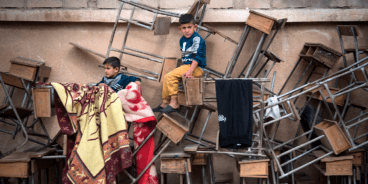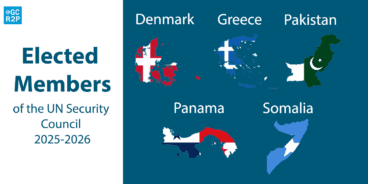
At Risk in Sri Lanka’s War
This article written by James Traub was originally published in the Washington Post. The original version is available here.
At this moment, at least 60,000 civilians trapped in a tiny strip of land along the northern coast of Sri Lanka are being deployed as human shields by the insurgent force known as the Tamil Tigers — while artillery shells fired by the Sri Lankan army land indiscriminately among rebels and noncombatants alike. The United Nations asserts that at least 4,500 civilians have been killed since January as the government has sought to decisively end a bloody rebellion that has lasted for a quarter-century. The army is said to be preparing a final assault that, according to U.N. Emergency Relief Coordinator John Holmes, could produce a “bloodbath.” Secretary General Ban Ki-moon has spoken of “tens of thousands” of lives at risk. Yet the conflict has barely been reported, and the international community has barely stirred.
The fighting threatens to produce exactly the kind of cataclysm that states vowed to prevent when they adopted “the responsibility to protect” at the 2005 U.N. World Summit. This doctrine stipulates that states have a responsibility to protect peoples within their borders from genocide, war crimes, crimes against humanity and ethnic cleansing. When states are found to be “manifestly failing” to protect citizens from such mass violence, that responsibility shifts to the international community, acting through the United Nations. At the core of this norm is the obligation to act preventively rather than waiting until atrocities have occurred, as has happened too often.
Why, then, the silence? The most important answer is simple: “the war on terror.” Government officials have artfully, and relentlessly, appropriated the language of the war on terror to characterize their fight against the rebels, formally known as the Liberation Tigers of Tamil Eelam (LTTE). The group is one of the world’s most ruthless insurgencies: The Tigers perfected the technique of suicide bombing long before Islamist jihadists did so (using it in 1991 to kill Indian Prime Minister Rajiv Gandhi, among many others) and operate almost as a suicide cult. The United States includes the LTTE on its list of foreign terrorist organizations. Any government that failed to aggressively confront such a threat would be guilty of failing to protect its citizens.
When we think of mass atrocities, we think of regimes — or their proxies — massacring defenseless citizens, as in Rwanda or Darfur. The situation in Sri Lanka is more complicated, morally and legally: This is a situation of armed conflict in which both parties are acting in ways that pose a grave risk to innocent civilians. (…)
But states engaged in combat do not have the right to perpetrate atrocities; nor does the cruelty of armed opponents absolve states of their responsibility to protect citizens. And there is no one better equipped than we in the United States to recognize the cynicism behind the language of the war on terror, which allows states to do as they wish in the name of defeating supreme evil. Over the past quarter-century, Sri Lanka has been accused of fighting the Tigers with a policy of enforced disappearances, extrajudicial killings and arbitrary detentions. In the current battle, the army has engaged in intense shelling and aerial bombardment of the combat area and an adjacent “no-fire zone,” set aside for civilians.
Colombo is in no mood for lectures. But we cannot accommodate its ambition to crush the LTTE if doing so could lead to massive loss of life among civilians. Quiet diplomacy by U.S. officials and by Ban and others last week persuaded the government to observe a two-day pause in the fighting, but the Tigers refused to let civilians leave, the government continued to prevent humanitarian groups from entering the conflict zone, and the battle resumed with equal or greater ferocity.
There is widespread agreement about what must be done: The LTTE must allow civilians who wish to leave to do so; the government must agree to observe a more extensive cease-fire, guarantee the safety of those civilians and treat them according to international standards governing internally displaced peoples. The Tigers may refuse to release civilians, whom they view as the only thing standing between themselves and annihilation. But the army must not use this as a pretext to resume hostilities: The rebels no longer represent a threat to the state, and most analysts believe that a Gotterdammerung on the beach would spawn a new insurgency. The time for behind-the-scenes diplomacy has passed. The Security Council must take up the issue — a move Colombo has fiercely resisted — and remind both sides that there will be consequences, in the form of prosecutions for crimes against humanity. The council should also demand that the government grant humanitarian groups and the media access to the conflict zone, dispatch a special envoy to the region, and consider imposing sanctions. Ultimately, it must help facilitate a durable political solution to the fighting. In 2005, the United States, along with the rest of the world, accepted the obligation to protect civilians at risk of atrocities. The moment has come to redeem that pledge.
Related Content


Sudan: UN Security Council must take urgent action to protect civilians
